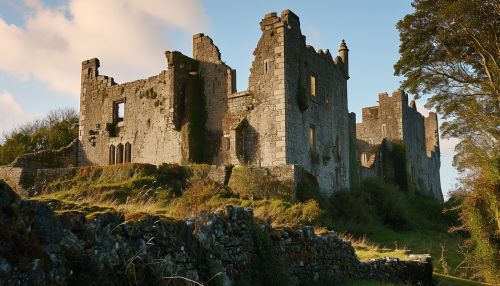Peerage of Ireland
Origins of the Peerage
The Peerage of Ireland is a term used to describe the system of hereditary titles that were bestowed upon individuals by the British monarch in Ireland. The titles were typically granted as a reward for loyalty to the crown or for military service. The peerage system in Ireland has its roots in the medieval period, when the Anglo-Norman invasion led to the establishment of a feudal system, similar to that in England.


The Anglo-Normans brought with them the concept of a landed aristocracy, which was a new concept in Ireland. The Irish kings and chieftains were replaced by a new class of nobility, who held their lands in return for military service to the king. This system of landholding and service was formalized in the creation of the peerage.
Structure of the Peerage
The Irish peerage consists of five ranks, in descending order of precedence: Duke, Marquess, Earl, Viscount, and Baron. Each rank has its own privileges and responsibilities, and each title is accompanied by a specific area of land, known as a peerage.
Dukes are the highest-ranking members of the peerage, and their title is derived from the Latin 'dux', meaning 'leader'. The title of Duke was rarely granted in Ireland, with only one dukedom, the Duke of Leinster, currently in existence.
Marquesses are the second highest rank in the peerage, and their title is derived from the French 'marquis', meaning 'border'. The title was used to denote the rulers of border areas, which were often subject to attack. There are currently no extant marquessates in Ireland.
Earls are the third rank in the peerage, and their title is derived from the Old English 'eorl', meaning 'nobleman'. The title of Earl was the most commonly granted in the Irish peerage, and there are currently 34 extant earldoms.
Viscounts are the fourth rank in the peerage, and their title is derived from the Latin 'vicecomes', meaning 'deputy count'. The title was originally used to denote the deputies of the Earls, who were responsible for administering their lands. There are currently 16 extant viscountcies in Ireland.
Barons are the lowest rank in the peerage, and their title is derived from the Old French 'baron', meaning 'man'. The title was originally used to denote the men who held land directly from the king. There are currently 74 extant baronies in Ireland.
Creation and Inheritance of Peerages
The creation of a peerage in Ireland was a formal process, involving the issuance of a patent by the monarch. The patent would specify the title, the lands associated with the title, and the terms of inheritance. The majority of peerages were hereditary, meaning that they could be passed down to the holder's descendants. However, some peerages were created with a life tenure, meaning that they would expire upon the death of the holder.
The inheritance of a peerage was governed by the principle of primogeniture, which meant that the eldest son of the holder would inherit the title. In the absence of a male heir, the title would pass to the nearest male relative. However, there were exceptions to this rule, and some peerages were allowed to pass through the female line.
Privileges and Responsibilities of Peers
The peers of Ireland had a number of privileges, including the right to sit in the House of Lords, the upper house of the British parliament. They were also exempt from certain taxes, and they had the right to trial by their peers in the event of serious criminal charges.
However, these privileges came with a number of responsibilities. Peers were expected to provide military service to the king, and they were also expected to provide financial support for the crown. In addition, they were responsible for the administration of justice in their lands, and they were expected to maintain the infrastructure of their estates.
Decline and Abolition of the Peerage
The peerage system in Ireland began to decline in the 19th century, as a result of political and social changes. The Act of Union in 1801, which merged the Kingdom of Ireland with the Kingdom of Great Britain to form the United Kingdom, led to the abolition of the Irish House of Lords. Irish peers were allowed to elect 28 of their number to sit in the British House of Lords, but the majority of Irish peers lost their legislative privileges.
The peerage system was further undermined by the Land Acts of the late 19th and early 20th centuries, which broke up the large estates of the Irish nobility. Many peers were forced to sell their lands, and the link between the peerage and landholding was effectively broken.
The final blow to the peerage system came with the establishment of the Irish Free State in 1922. The new constitution did not recognize the titles of the Irish peerage, and the peers lost their remaining privileges. However, the titles themselves were not abolished, and they continue to be used as a form of courtesy title.
